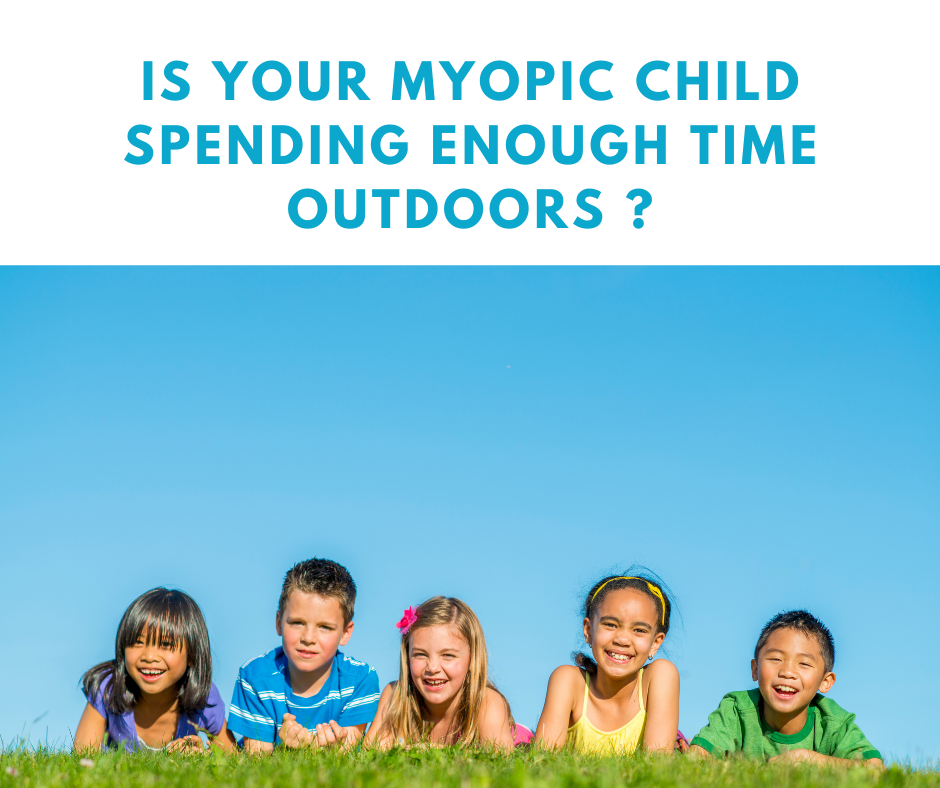3 Reasons Why Kids With Myopia Need to Spend More Time Outdoors
 Most parents are aware of the many benefits associated with children taking part in outdoor activities. The obvious benefits of fresh air and physical exercise aren’t the only perks for kids who play outdoors. Recent research shows that increased “sun time” can actually slow down the progression of myopia (often referred to as nearsightedness), or even postpone its onset!
Most parents are aware of the many benefits associated with children taking part in outdoor activities. The obvious benefits of fresh air and physical exercise aren’t the only perks for kids who play outdoors. Recent research shows that increased “sun time” can actually slow down the progression of myopia (often referred to as nearsightedness), or even postpone its onset!
But First, What Is Myopia and Why Is It Harmful?
Myopia is an eye disease that causes the eye to elongate more than it should, resulting in blurry distance vision. It’s caused by a combination of genetic and environmental factors, two of which are not spending enough time outdoors and doing excessive near work like device use.
Many parents aren’t aware that childhood myopia significantly increases the risk of developing serious eye diseases and conditions like glaucoma, retinal detachment, and macular degeneration later in life. It’s been shown that higher myopia is associated with a greater risk of eye disease.
That’s why it’s important to stop myopia in its tracks with myopia management.
3 Reasons Why Outdoor Play Benefits Your Child’s Eyes
Whether your child is currently nearsighted or not, spending time outdoors in the sunshine can help delay the onset of myopia or slow its progression.
- The Brightness of the Sun
The sun’s visible light is significantly brighter than the lighting in almost any indoor setting, which may play a major role in controlling myopia.Studies have shown that when sunlight comes in contact with the retina, it causes the release of dopamine into the eye. This may prevent the eye from elongating. Preventing the eye from growing too long is the main goal of myopia management.
What is certain: children who spend at least 2-3 hours playing outdoors in the sunshine progress less rapidly than children who spend almost all their time indoors.
- Long-Distance Focusing
It is well established that prolonged near activities like reading and screen time contribute to myopia onset and progression. It’s no surprise that studies now show COVID-19 confinement may have caused higher rates of myopia in children as well.Spending time outdoors, on the other hand, encourages your child to focus on distant objects like trees, basketball hoops, a ball flying through the air— anything that’s more than an arm’s length away.
- Vitamin D
Vitamin D helps smooth muscle tissue around the eye’s crystalline lens allowing it to function properly.This smooth muscle helps focus light on the retina, and may also help maintain the proper eye shape and length between the lens and the retina, which can become distorted as a child’s eyes grow with every passing year.
Moreover, the sun’s invisible UVB light triggers Vitamin D production. Some studies have found that nearsighted individuals have lower levels of Vitamin D than those with normal vision. However, more research is needed to solidify this claim, as only small-scale studies have been performed.
The recommended time for daily outdoor play is at least 2 hours for children over the age of 6. Be sure to send your child outside with a water bottle, sun hat, sunglasses, and sunscreen.
At Treehouse Eyes, our goal is to battle childhood myopia and preserve children’s eye health for the long term. We encourage parents to learn more about myopia and check out real stories from satisfied parents and children sharing their experiences with our professional doctors, staff, and myopia treatment protocols at Treehouse Eyes.
Prevent serious, sight-robbing eye diseases by scheduling your child’s myopia consultation today. Contact your local Treehouse Eyes provider today and see your child’s quality of life improve before your eyes!